Be it a private residence or a tower-like apartment complex, rooftop pools with transparent sections make an eye-catching addition to contemporary buildings.
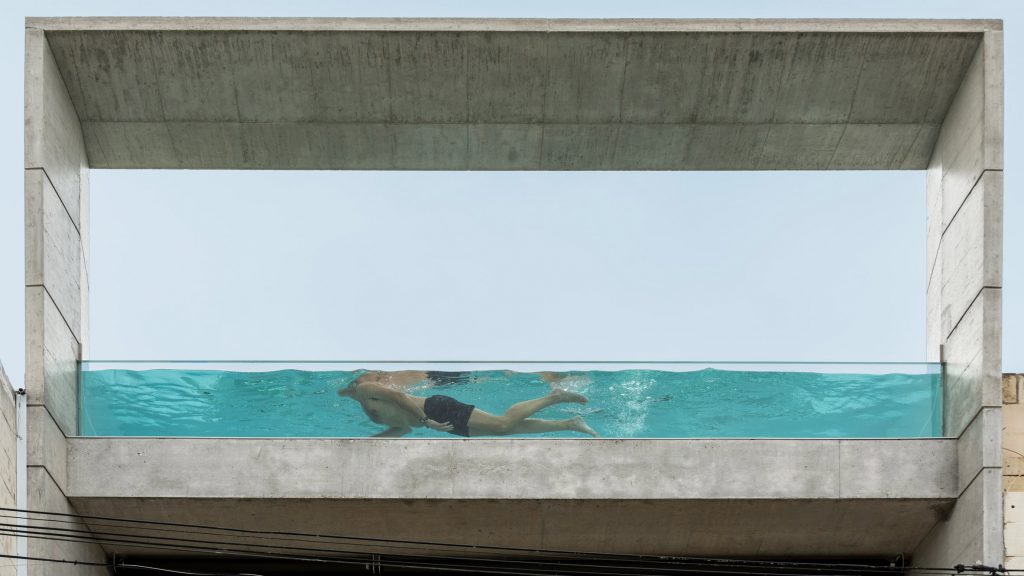
Sicilian office Architrend Architecture has topped a concrete house in the seaside town of St. Julian’s Malta with a rooftop swimming pool with a glass side that makes the water visible from street level as well as from inside the living space below. This solution creates a fresh atmosphere inside the house and gives the building a special identity from the outside.

Casa B by Architrend (also header image)
Inserted into a traditional terrace that looks out across the surrounding rooftops towards the coast and the Maltese capital, the four-storey Casa B follows the same general arrangement of its more traditional neighbours, but is differentiated from them by its contemporary material palette and minimalist aesthetic.

Casa B by Architrend
The house’s double skin is formed by a glazed elevation covered, through which light pours into the living spaces, with a system of sliding aluminium. The concrete facade extends upwards to form a frame for the view that also links the interior and exterior spaces.
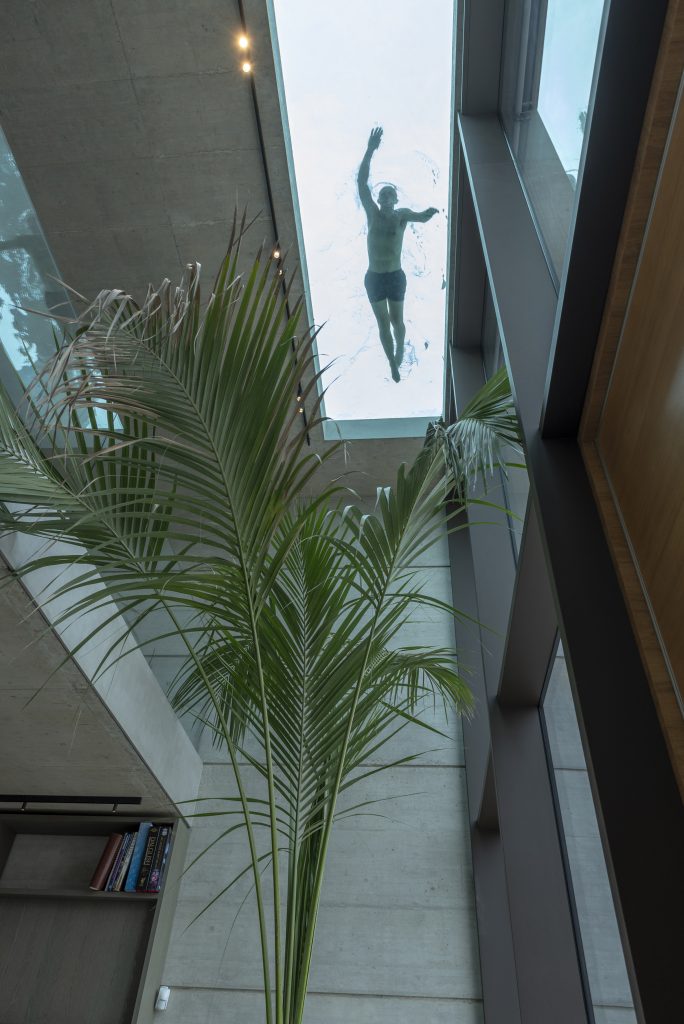
Casa B by Architrend
An opening in the ceiling of the double-height entrance lobby provides a view of the underside of the rooftop pool, and the large void ensures a visual connection between the different floors. A simple concrete staircase leads along one wall of the main living area, passing through apertures in the concrete floor plates that also allow light to filter down.
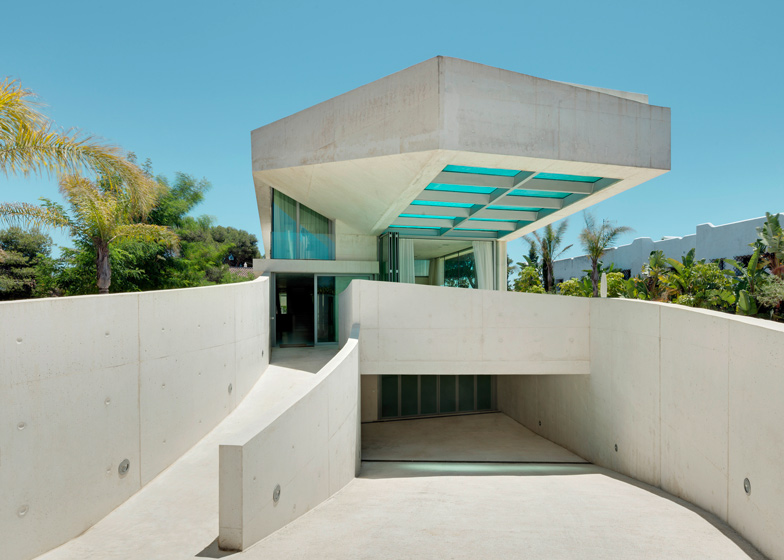
Jellyfish House by Wiel Arets
Amsterdam-based Wiel Arets Architects have designed a three-storey concrete residence in Marbella, on the Mediterranean coast of Spain, with a swimming pool cantilevered from its roof to allow residents enjoy a view of the Mediterranean sea while sunbathing or swimming – that would otherwise have been blocked by the neighbouring buildings.
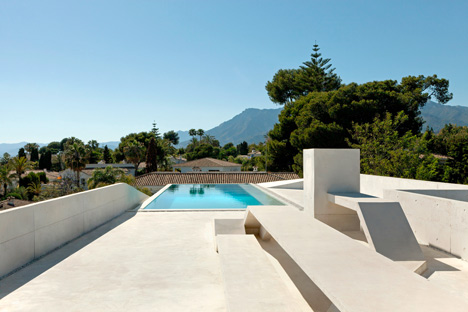
Jellyfish House by Wiel Arets
Named Jellyfish House, the dwelling is organised around two paths of circulation: ‘fast’ and ‘slow’ sets of exterior stairs that intertwine and traverse the house’s four levels. The gently inclined slow route spans the length the house, connecting all three floors with the roof terrace, while the adjacent fast stair offers direct access from the exterior to the roof. Enclosed in glass, it physically separates it from the house’s interior, so that sand is not brought in residents when return from the beach.

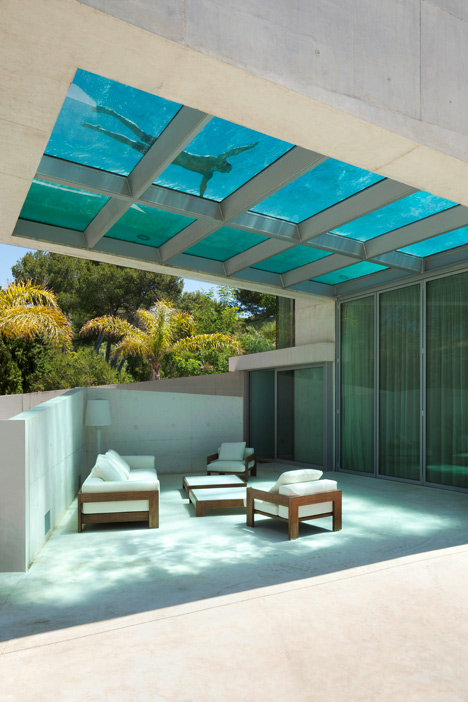
Jellyfish House by Wiel Arets
The rooftop pool is cantilevered 9 metres toward the Sierra Blanca mountain range in the distance and equipped with an infinity-edge, so its water merges with the sea in the distance. The swimming pool projects 9m out across a semi-enclosed terrace toward the Sierra Blanca mountain range in the distance. It is equipped with an infinity edge, so its water merges with the sea in the distance. The rear wall of the pool features a large interior window, allowing residents in the first-floor kitchen to look out at friends and family taking a swim. The searing Spanish sun constantly filters through the pool’s glass wall and floor, creating ripples of iridescent turquoise reflections throughout the entire house.

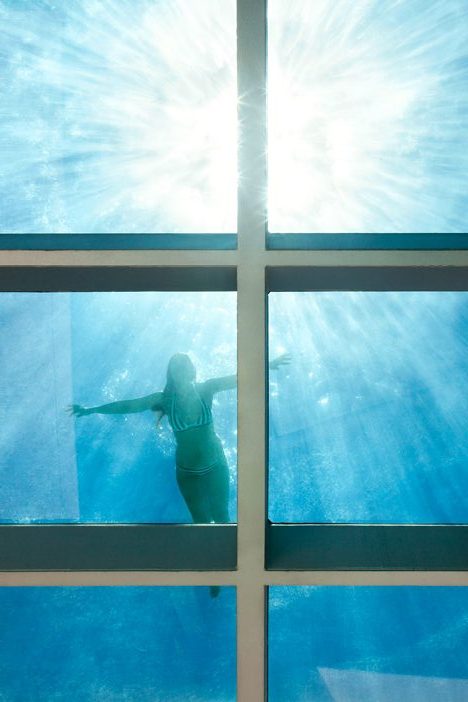
Jellyfish House by Wiel Arets
Other unusual details include a service elevator that allows food and drink to be sent up from the kitchen to the roof, video and audio devices that are recessed into the walls, and a first-floor sauna and steam room.
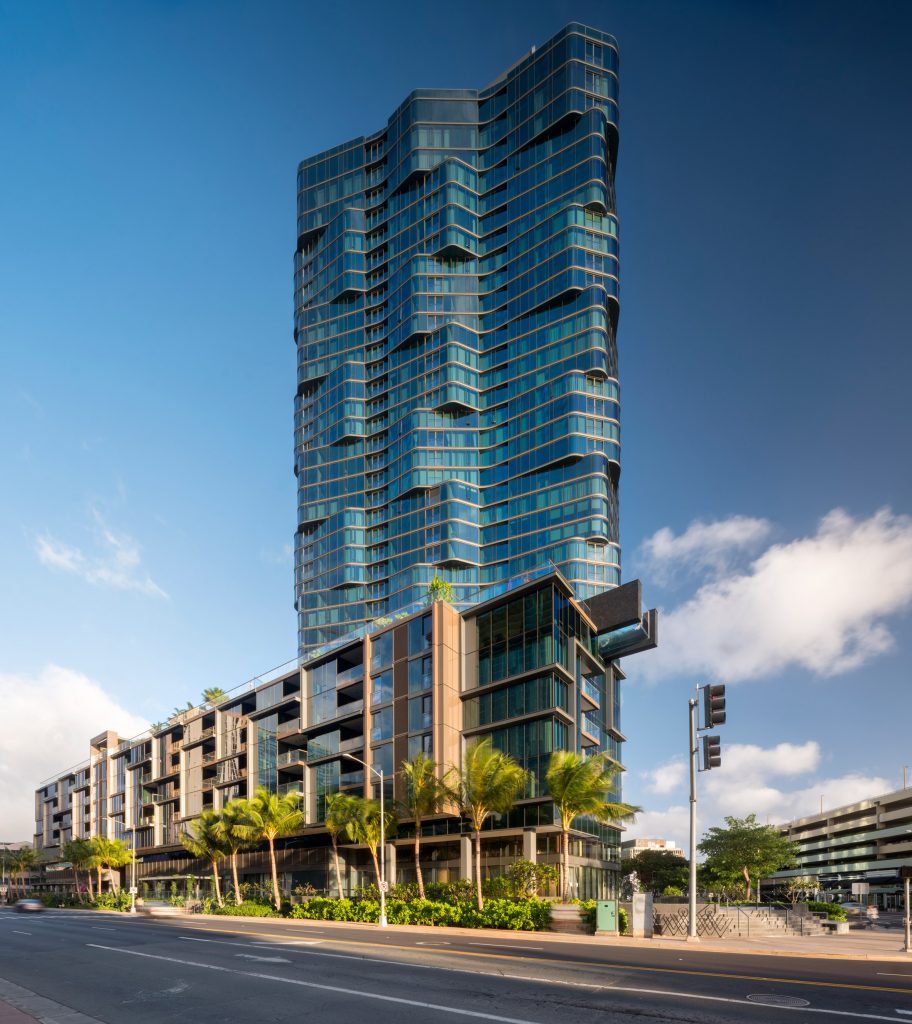
Anaha by Solomon Cordwell Buenz
The Anaha complex in Honolulu, Hawaii, also features a glass-bottomed pool extending out 23 metres above the ground from the seventh floor of the skyscraper designed by Chicago-based studio Solomon Cordwell Buenz (SCB) in collaboration with local firm Benjamin Woo Architects.

Anaha by Solomon Cordwell Buenz
The rest of the 38-storey tower features green-blue glass cladding, chosen to mimic the colours of the nearby Pacific Ocean. The composition is reminiscent of the play between the crests and troughs of a calm ocean wave. The building’s grand lobby also boasts Hawaii’s largest living wall, which contains over 8,000 species of tropical plants.